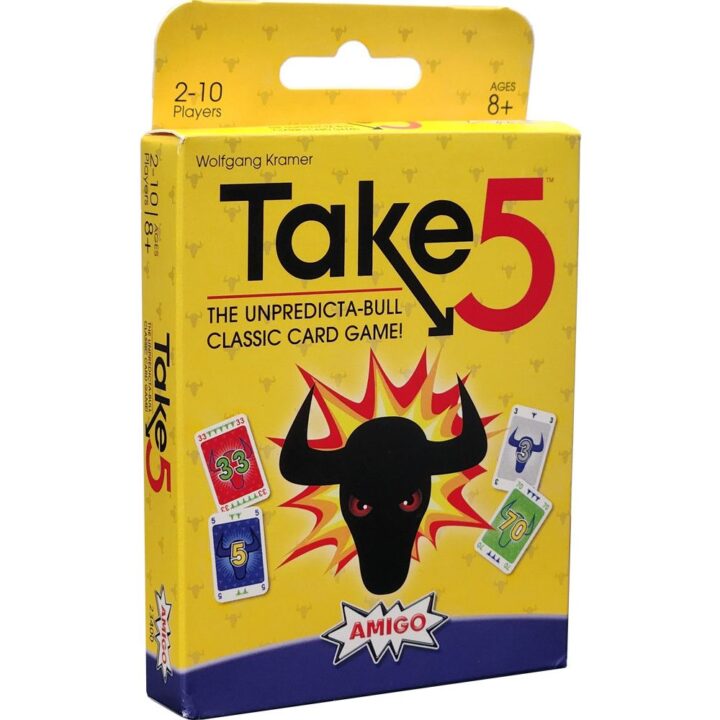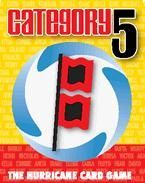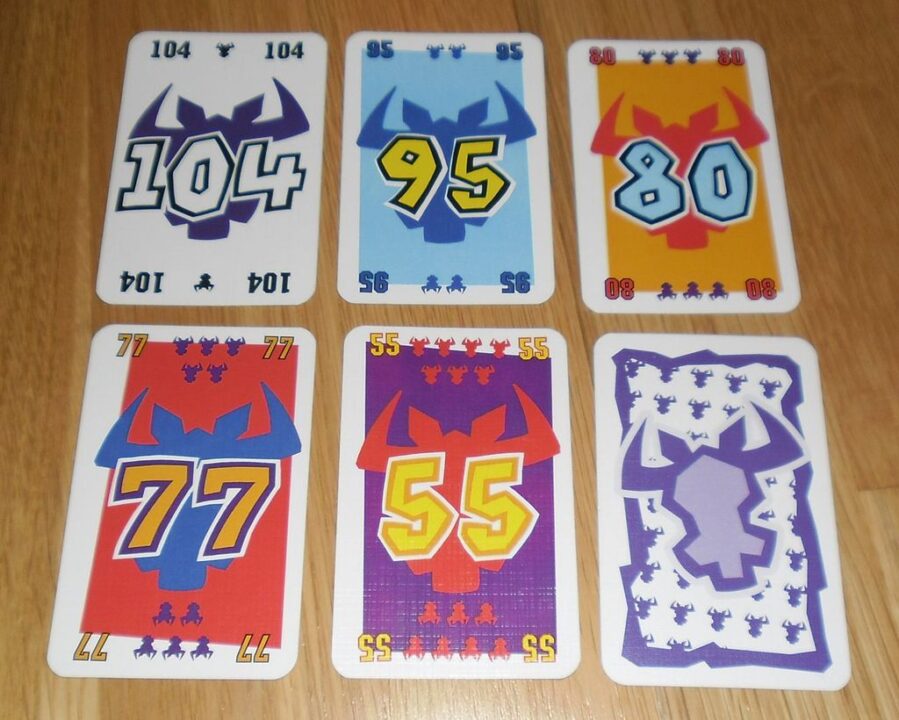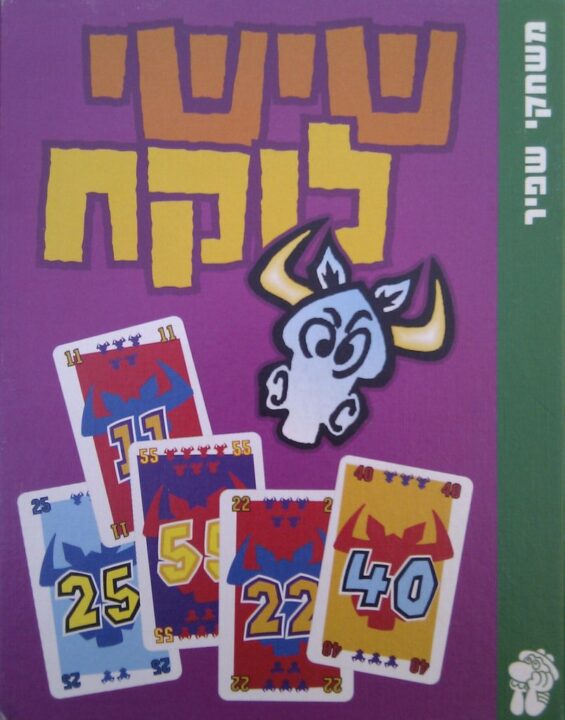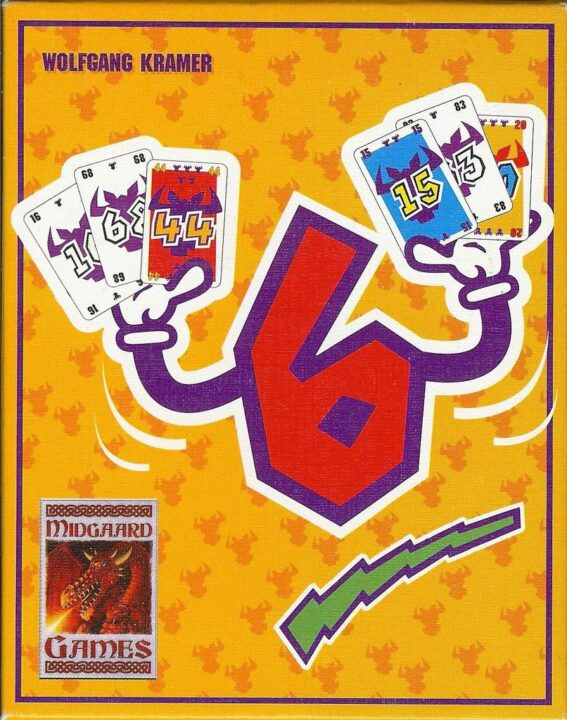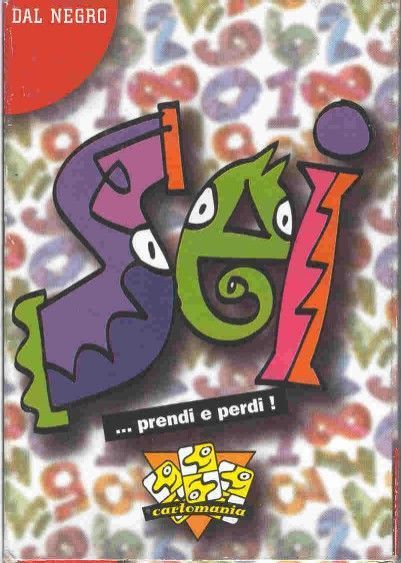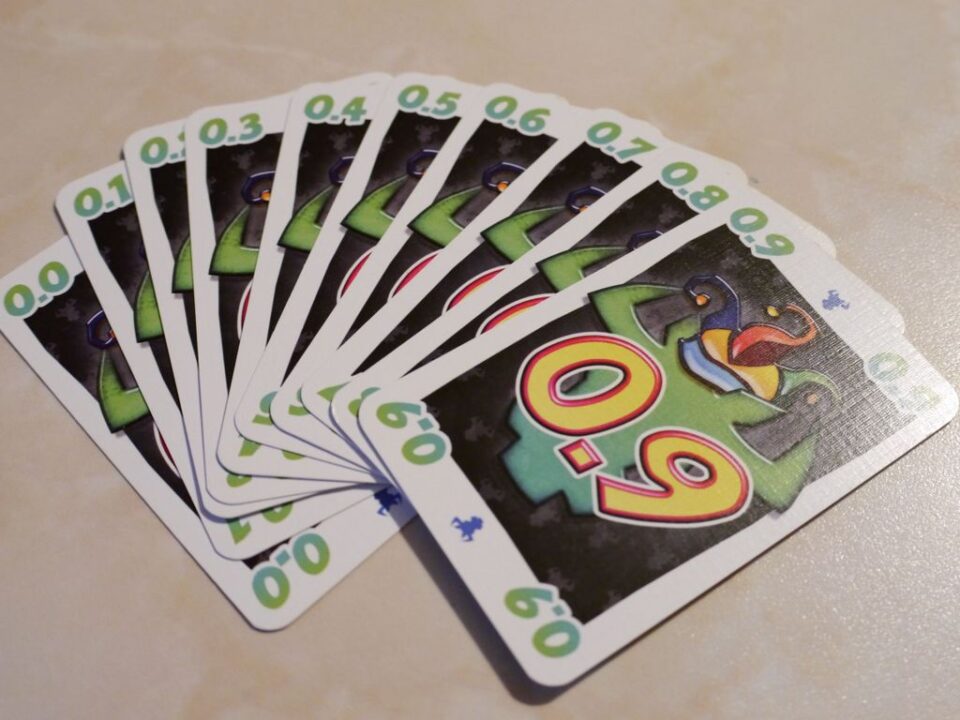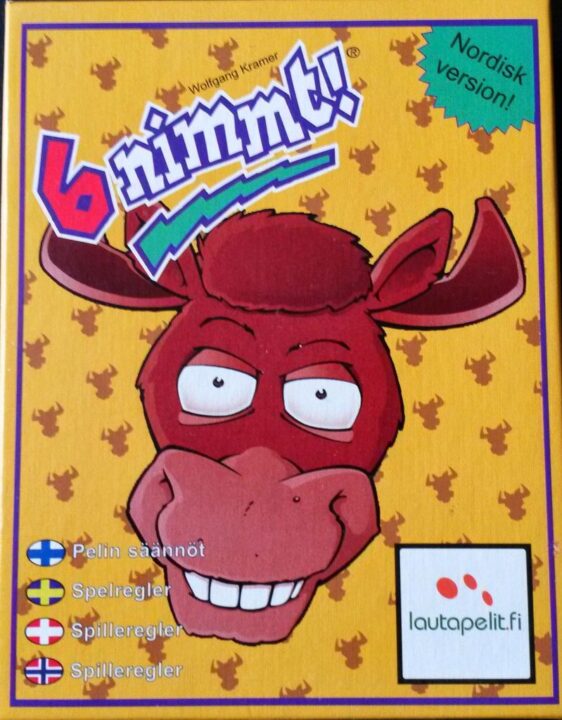Overview
Diving into the world of board games, today’s review takes on Take 5 – a game that cleverly combines strategy, player interaction, and the continuous tug-of-war between luck and meticulous planning. This review grants insights into its scoring mechanism, evaluates the dynamics of player interactions, and delves into how well the game balances luck with strategic gameplay, all seasoned with personal play anecdotes.
How It Plays
Take 5 is a card game that challenges players to meticulously plan their moves while anticipating their opponents’ actions. Its main appeal lies in its balance of strategy and luck, encapsulated within a simple ruleset.
Setting up
To set up the game, shuffle the deck of 104 cards, each numbered from 1 to 104. Depending on the number of players, deal 10 cards to each player. Then, randomly select four cards to place face-up in the middle of the table, starting four rows.
Gameplay
Players simultaneously choose a card from their hand and reveal it. Cards are then added to one of the rows in ascending order. If you place the sixth card in a row, you must take the first five cards, including any bulls heads on these cards, which count as penalty points. Each player’s goal is to avoid collecting cards, especially those with more bulls heads, to minimize their point total.
Winning the game
The game is played over several rounds. After each player has played all ten of their cards, the round ends, and penalty points (bulls heads) are tallied. After a predetermined number of rounds, the player with the fewest penalty points wins the game.
Want to know more? Read our extensive strategy guide for Take 5.
Mastering the Scoring in Take 5: A Personal Tale
Throughout my board game adventures, the scoring mechanism in Take 5 has stood out for its brilliance and frustration in equal measure. Initially, my friends and I were baffled by its simplicity – how could something so straightforward yield such complexity? Yet, as we delved deeper, the beauty of its efficiency became evident. The game’s scorer, deft at weaving in strategy within its numeric bounds, gifted our sessions with unexpected turns. One memorable night, a single decision flipped my fortune from last to leading, painting a vivid picture of Take 5’s scoring finesse. This elegant simplicity, transforming minimal actions into game-changing moments, encapsulates why scoring mechanisms like Take 5’s are a design marvel.
Next up, let’s dive into how Player Interaction Intensity elevates the experience.
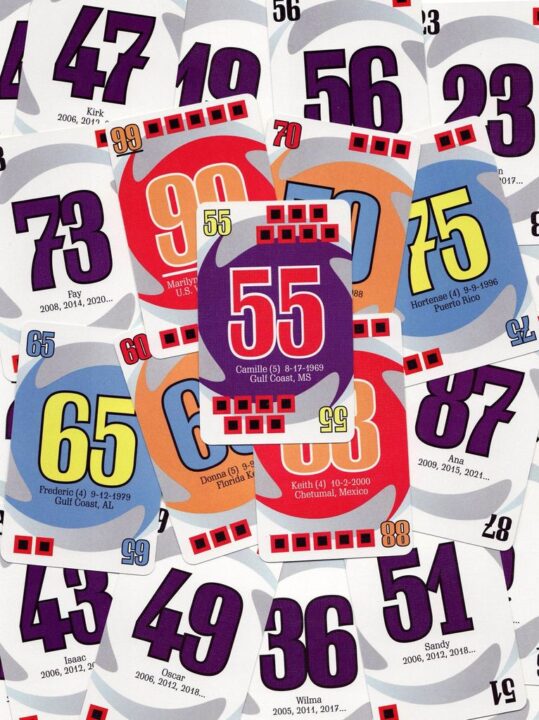
Exploring Player Interaction in Take 5
In every game night featuring Take 5, the room buzzes with a sense of camaraderie punctuated by moments of sneaky rivalry. It starts subtly, as you try to guess which cards your opponents are holding. My most memorable rounds involved tense moments where friends and I strategized out loud, claiming we’d play certain numbers, only to surprise each other with unexpected moves. These mischievous tactics lead to bursts of laughter, showcasing the game’s capability to foster social interactions.
The intensity of player interaction escalates with each round. Just last week, a game ended in a nail-biting finish as we all held our breath, watching the last few cards being played. With Take 5, the game morphs from being just about numbers to a playground of psychological strategizing.
Up next: Let’s delve into how Take 5 balances strategy with the whims of luck.
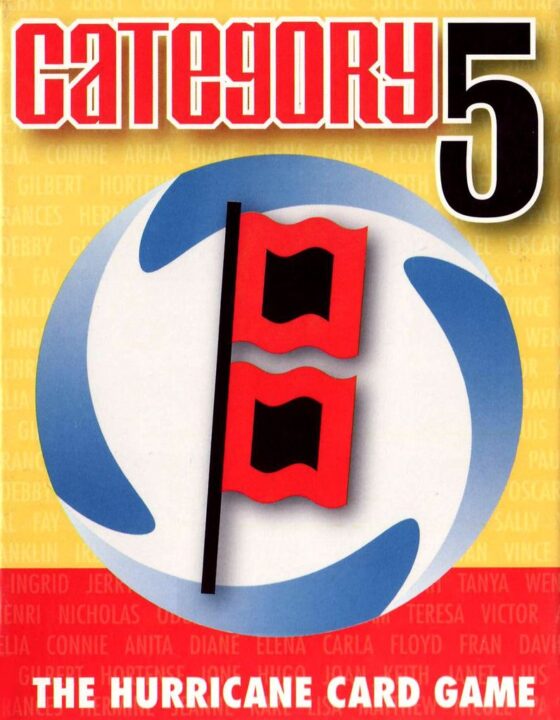
The Balance between Strategy and Luck in Take 5
In my gaming circle, Take 5 has always sparked debates over the balance between strategy and luck. Every game night, we sit down, and from the first card laid to the last, there’s this tantalizing dance between careful planning and the whims of fate. Personally, I’ve seen my meticulously crafted strategies crumble due to one unexpected move. Yet, that’s where Take 5 shines, crafting a perfect milieu where both elements coexist harmoniously.
During one memorable session, I was inches away from victory, strategizing around cards I predicted others would play. In a twist of fate, a friend, fueled purely by luck, played a card that reshuffled our plans, leaving us in disbelief and laughter. This moment encapsulated the game’s appeal: despite our best efforts, luck can always turn the table, creating thrilling upheavals.
In conclusion, due to its brilliant blend of strategic depth and the unpredictable nature of luck, I wholeheartedly recommend Take 5. It’s a testament to the beauty of board games where planning meets unpredictability for an endlessly entertaining experience.
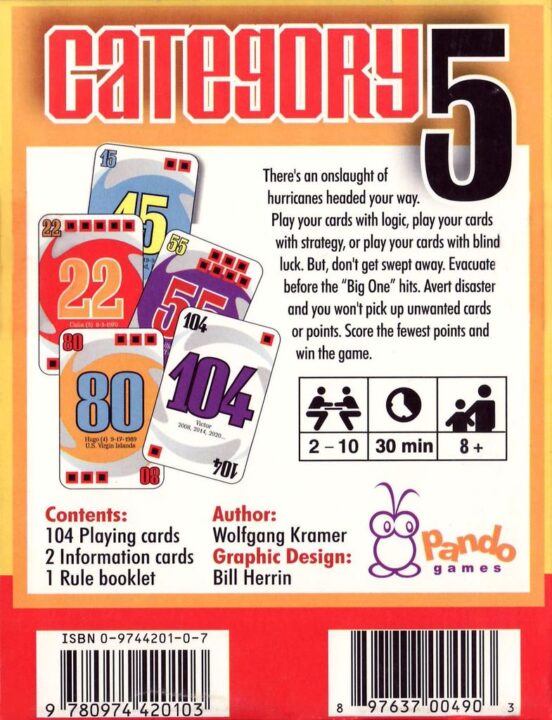
Conclusion
In concluding this review of Take 5, it’s clear that the game stands out due to its efficient scoring mechanism, the way it fosters intense player interaction, and the balance it strikes between strategy and luck. From the setup through gameplay, to ultimately winning the game, Take 5 offers a challenged yet inviting experience fit for a wide audience. Through personal anecdotes and a deep dive into the game’s mechanics, this review aims to illustrate why Take 5 is not just another board game but an engaging journey of strategic discovery, laughter, and camaraderie.

